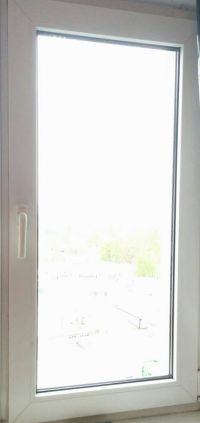Good morning
The topic may seem simple, but I must admit that I have big problems coping with this problem. I moved into a new apartment and a PVC window howls at the desk. I turn on the sound. It goes crazy all day long. : /
Of course, under the slogan window adjustment there are various movies and tutorials, but none leads directly to the issue of this squeak / howl, and an attempt to adjust the side clamps did not bring any result. I also tried to seal the window in accordance with online tips, but the same -
nothing happened. I don't know where to start and what it means "you have to figure it out". I will be grateful for specific information. Where does it come from, what to do with it and how to proceed.
I also add a picture of the window. although I don't know if it will change anything, except that it is a standard PVC window.
although I don't know if it will change anything, except that it is a standard PVC window.
I write immediately - I do not have warranty for these windows, I do not have the option to force the owner of the exchange; I am not looking for alternative solutions in the style of knock / wall - I am interested in whether this problem can be solved, and if so, how.
Thank you for the advice and best regards
The topic may seem simple, but I must admit that I have big problems coping with this problem. I moved into a new apartment and a PVC window howls at the desk. I turn on the sound. It goes crazy all day long. : /
Of course, under the slogan window adjustment there are various movies and tutorials, but none leads directly to the issue of this squeak / howl, and an attempt to adjust the side clamps did not bring any result. I also tried to seal the window in accordance with online tips, but the same -
nothing happened. I don't know where to start and what it means "you have to figure it out". I will be grateful for specific information. Where does it come from, what to do with it and how to proceed.
I also add a picture of the window.
 although I don't know if it will change anything, except that it is a standard PVC window.
although I don't know if it will change anything, except that it is a standard PVC window. I write immediately - I do not have warranty for these windows, I do not have the option to force the owner of the exchange; I am not looking for alternative solutions in the style of knock / wall - I am interested in whether this problem can be solved, and if so, how.
Thank you for the advice and best regards



